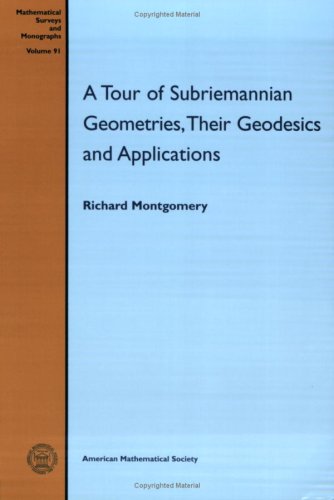

Most ebook files are in PDF format, so you can easily read them using various software such as Foxit Reader or directly on the Google Chrome browser.
Some ebook files are released by publishers in other formats such as .awz, .mobi, .epub, .fb2, etc. You may need to install specific software to read these formats on mobile/PC, such as Calibre.
Please read the tutorial at this link: https://ebookbell.com/faq
We offer FREE conversion to the popular formats you request; however, this may take some time. Therefore, right after payment, please email us, and we will try to provide the service as quickly as possible.
For some exceptional file formats or broken links (if any), please refrain from opening any disputes. Instead, email us first, and we will try to assist within a maximum of 6 hours.
EbookBell Team

5.0
58 reviewsThe book is devoted to the study of subriemannian geometries, their geodesics, and their applications. It starts with the simplest nontrivial example of a subriemannian geometry: the two-dimensional isoperimetric problem reformulated as a problem of finding subriemannian geodesics. Among topics discussed in other chapters of the first part of the book we mention an elementary exposition of Gromov's surprising idea to use subriemannian geometry for proving a theorem in discrete group theory and Cartan's method of equivalence applied to the problem of understanding invariants (diffeomorphism types) of distributions. There is also a chapter devoted to open problems.
The second part of the book is devoted to applications of subriemannian geometry. In particular, the author describes in detail the following four physical problems: Berry's phase in quantum mechanics, the problem of a falling cat righting herself, that of a microorganism swimming, and a phase problem arising in the $N$-body problem. He shows that all these problems can be studied using the same underlying type of subriemannian geometry: that of a principal bundle endowed with $G$-invariant metrics.
Reading the book requires introductory knowledge of differential geometry, and it can serve as a good introduction to this new exciting area of mathematics.